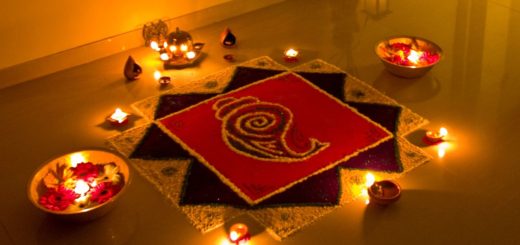The Five Days Of Diwali
Diwali is actually a five day festival. In fact, the festivities last well over a week. One of the main reasons that make Diwali so special is that it has got something for everyone. If you are the religious type who loves poojas and day long fasting, Diwali is the right festival for you. Now in case you enjoy feasting, well, Diwali won’t disappoint you. A variety of mouthwatering sweets and dishes are prepared on the occasion of Diwali. It is also customary for employers to acknowledge the contribution of their employees by giving them sweets, gifts and money. People also make it a point to give food to the needy. The idea is that everyone should be able to enjoy the festival. Fireworks are the main reason children love Diwali. In many states, Diwali vacation lasts well over 10 days so kids have ample opportunities to celebrate. And those with artistic skills can showcase their talent by making elaborate rangolis in front of their door.

Illuminates earthen lamps are placed around a rangoli to celebrate the occasion of Diwali.
The five days of Diwali
As we have already said, Diwali is celebrated over 5 days. These five days have five different names and significance.
Dhanteras
The first day is called Dhan Teras or Dhanvantari Triodas. Diwali celebrations officially begin on this day. It is considered to be an auspicious day for buying gold and precious metals. Needless to say, jewelers are the busiest people on this day. Dhanteras fall on the 13th day of the dark fortnight (Krishna Paksha) in the Hindu month of Karthika. Legend has it that Lord Dhanwantari, the deity of health and well-being, emerged from the ocean on this day with Ayurveda, the Indian science of holistic medicine. Children light sparklers and burst firecrackers in the evening. People also place some earthen lamps outside their door. While Danteras is essentially a shopping day in most parts of country, in states like Gujarat, it has strong religious significance. In fact, for Gujaratis, Danteras is even more significant than the actual Diwali day. They workship Goddess Lakshmi, God Ganesh and Kuber (Hindu god of riches) on this day.
Narak Chaturdasi (2nd day)
The second day of Diwali is celebrated as Narak Chaturdasi or Kali Chaudas. In many parts of the country, it is simply Choti Diwali. Legend has it that Lord Krishna killed demon Narakasur on this day and thus freed the world from fear. Earlier people used to massage their body with oil on this day to get rid of lethargy and fatigue. While it was traditionally thought to be a day to rest and relax, nowadays it has become as vibrant as any other day of Diwali. People visit their friends and relatives and shop.
Diwali (3rd day)
The third day is the actual Diwali day. Lakshmi Pooja and Ganesh Pooja are the most important rituals performed on this day. People wear new clothes, light diyas (earthen lamps), burst firecrackers and wish each other Happy Diwali. After worshipping Goddess Lakshmi in the evening, they visit temples and Gurudwaras. They also exchange sweets.
Bestu Baras / Vishwakarma Day (4th day of Diwali)
The fourth day of Diwali is celebrated in different ways in different parts of the country. For Gujaratis, their New Year or Bestu Baras starts on this day. In northern states of the country, this day is celebrated as Vishwakarma Day and people worship their tools and machinery. As a result, most business establishments remain closed on this day. Another important ritual performed on this day is Govardhan Pooja.
Bhai Dooj or Bhai Beej (5th day)
On the fifth day, brothers visit their sisters and give them gifts. In return, sisters prepare sweets for their brothers. Together they pray for health, success and happiness.
